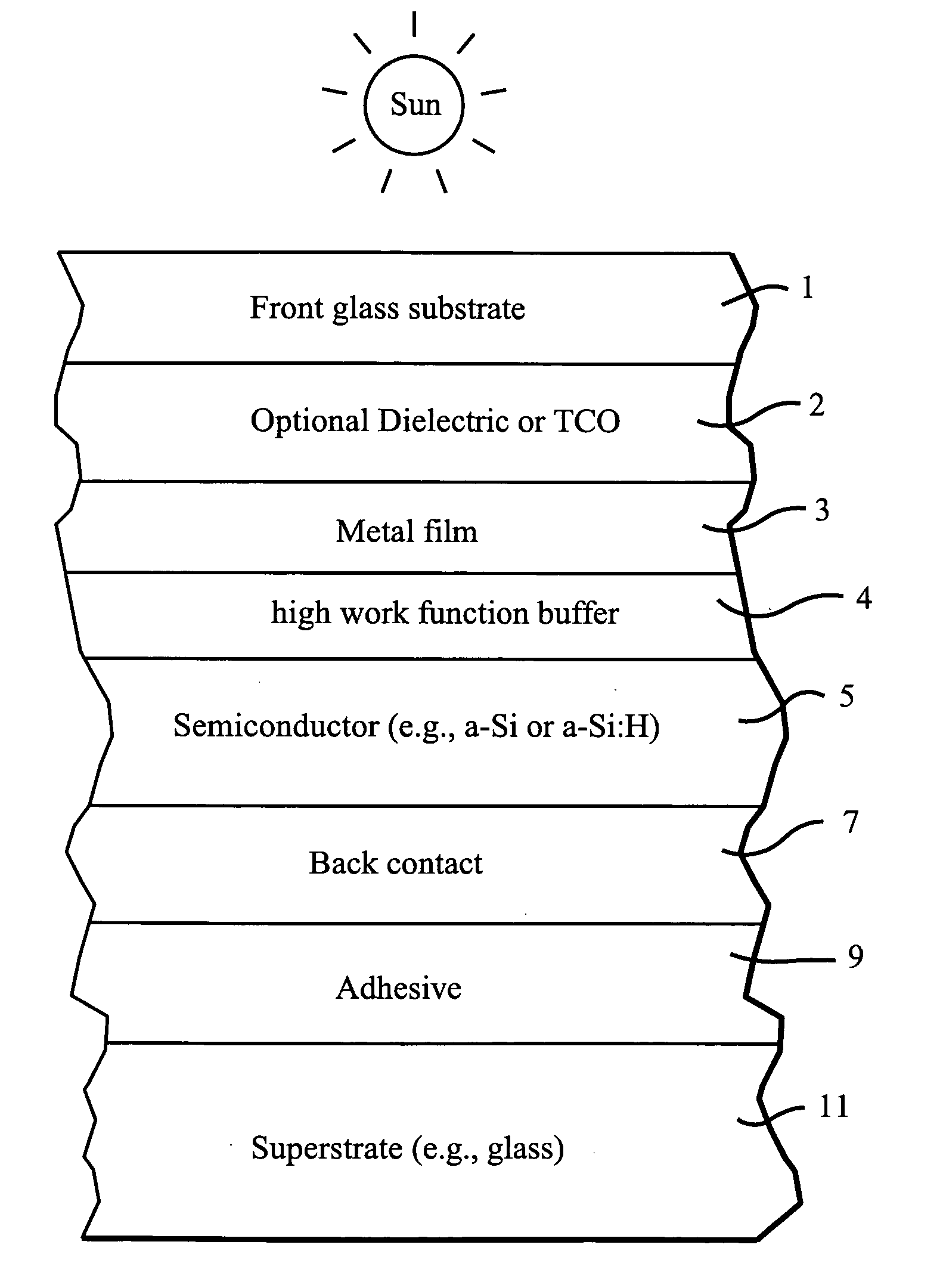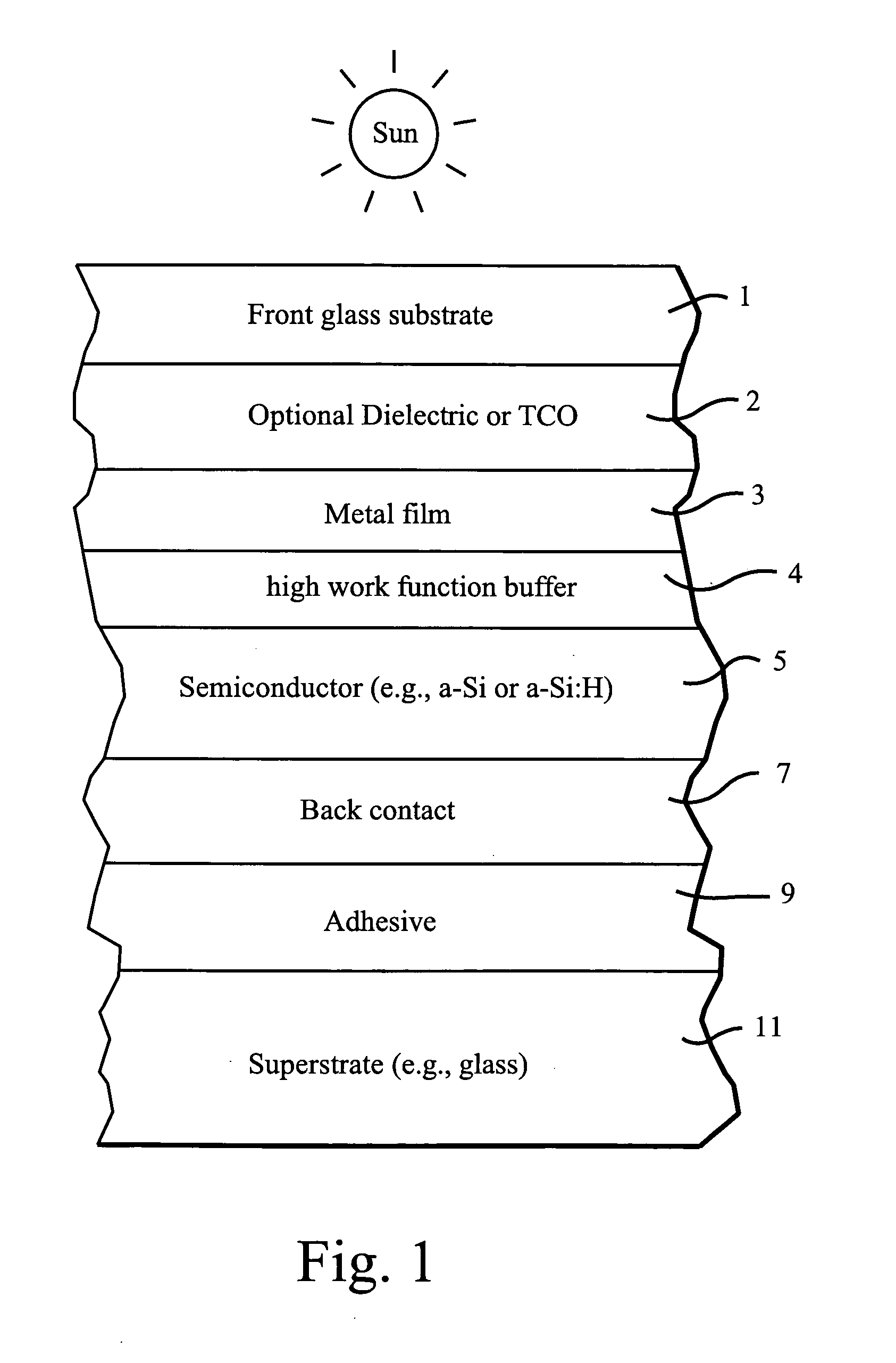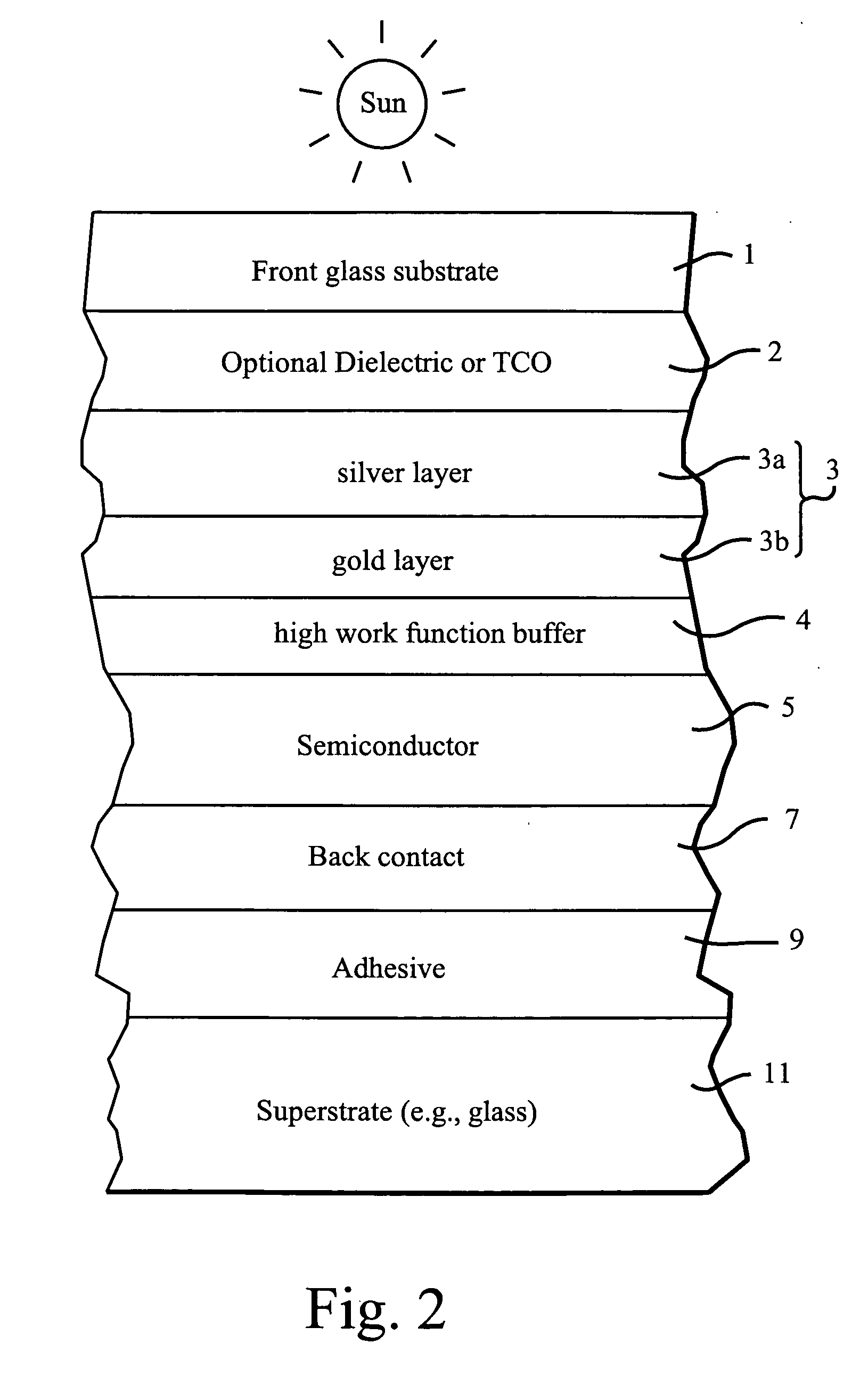Front electrode with thin metal film layer and high work-function buffer layer for use in photovoltaic device and method of making same
a technology of photovoltaic devices and buffer layers, which is applied in the direction of basic electric elements, electrical apparatus, and semiconductor devices, can solve the problems of insufficient conductivity, difficult to make front electrodes made solely of zinc oxide tco layers, and tend to suffer from darkening, so as to reduce the potential barrier for holes extracted, and be made more cheap and/or fast
- Summary
- Abstract
- Description
- Claims
- Application Information
AI Technical Summary
Benefits of technology
Problems solved by technology
Method used
Image
Examples
Embodiment Construction
[0014]Referring now more particularly to the drawings in which like reference numerals indicate like parts throughout the several views.
[0015]Photovoltaic devices such as solar cells convert solar radiation and other light into usable electrical energy. The energy conversion occurs typically as the result of the photovoltaic effect. Solar radiation (e.g., sunlight) impinging on a photovoltaic device and absorbed by an active region of semiconductor material (e.g., a semiconductor film including one or more semiconductor layers such as a-Si layers) generates electron-hole pairs in the active region. The electrons and holes may be separated by an electric field of a junction in the photovoltaic device. The separation of the electrons and holes by the junction results in the generation of an electric current and voltage. In certain example embodiments, the electrons flow toward the region of the semiconductor material having n-type conductivity, and holes flow toward the region of the ...
PUM
 Login to View More
Login to View More Abstract
Description
Claims
Application Information
 Login to View More
Login to View More - R&D
- Intellectual Property
- Life Sciences
- Materials
- Tech Scout
- Unparalleled Data Quality
- Higher Quality Content
- 60% Fewer Hallucinations
Browse by: Latest US Patents, China's latest patents, Technical Efficacy Thesaurus, Application Domain, Technology Topic, Popular Technical Reports.
© 2025 PatSnap. All rights reserved.Legal|Privacy policy|Modern Slavery Act Transparency Statement|Sitemap|About US| Contact US: help@patsnap.com



